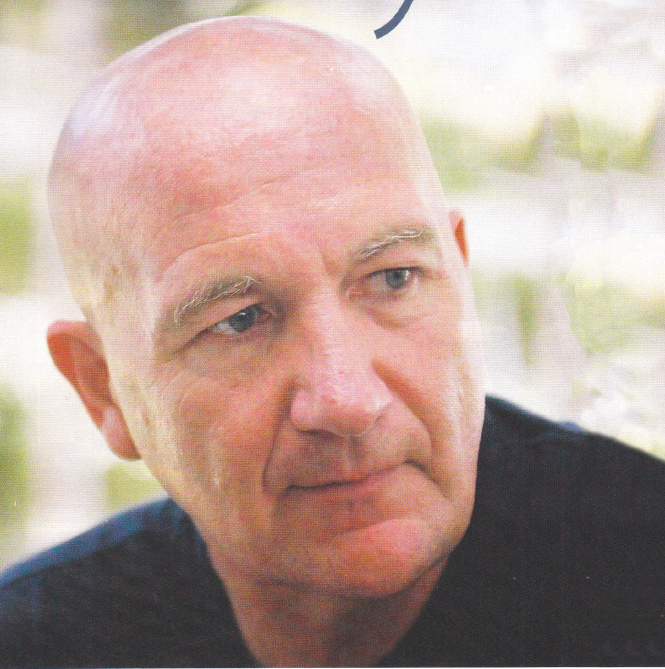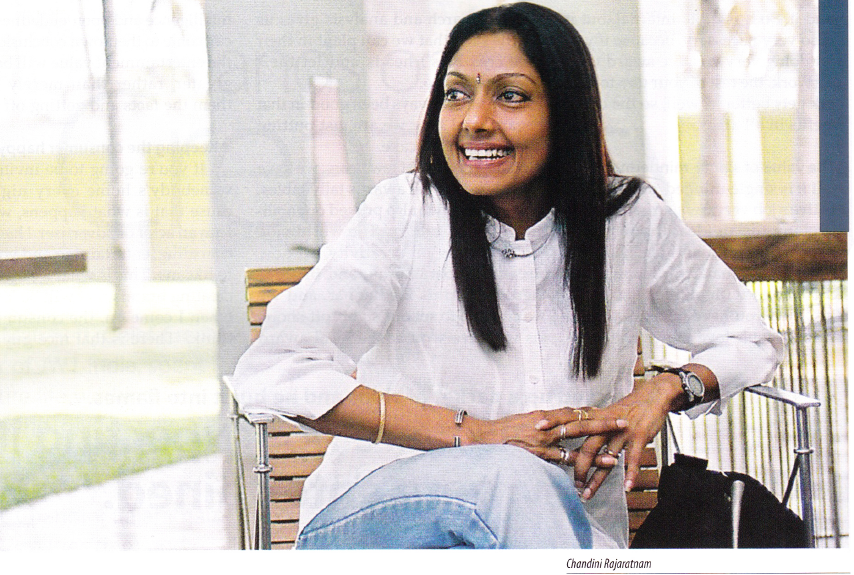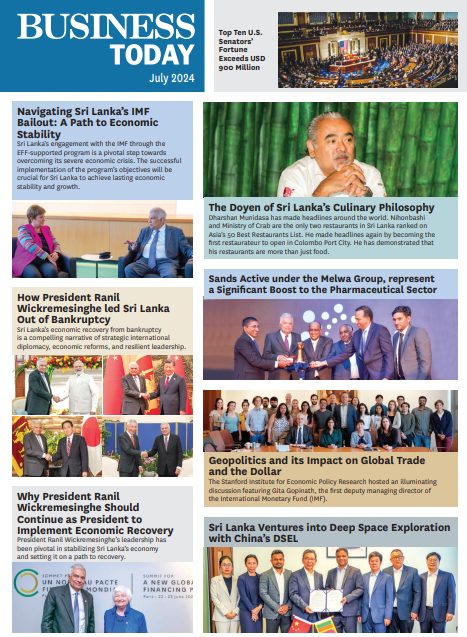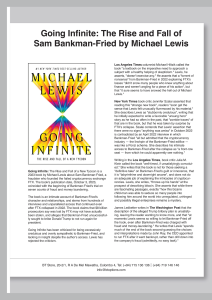Bruce Matchett, Chief Creative Officer of JWT India, spent his entire life working in advertising, give or take a few years as a singer in a rock band and four years at art school. Chandini Rajaratnam is the Vice President and Executive Creative Director of JWT, Sri Lanka. They spoke to Harin Fernando of Business Today on enhancing creativity and of lessons learned from a career in the advertising industry.

What are you doing in Sri Lanka?
BM: I am here to run a creative workshop and stimulate the young minds of JWT. I look forward to coming back in February 2007, when there is an industry forum on creativity and another workshop with JWT. I will be working closely with the Colombo office in the future.
Balancing, winning awards and selling the product?
If you look at the fashion industry, there are catwalks like fashion TV where you display your best work. Nobody really buys all that, the rest of the world buys it through a department store.
I think that if you do great work, the awards should be a by-product. So the first focus is effectiveness. The advertisement must work and the client must get results, and that’s why we are there in the first place, that is our responsibility. It would be good if it just became a by-product. The media actually drives the awards too. For example if I was to ask you ‘which is the most creative agency in Sri Lanka,’ the first thing you would do is run off to the award shows tally, and you would check who came on top. So the importance of winning awards is not only self indulgent, it is actually a necessity that is the measurement that the media has already put in place, and therefore we have to compete.
Can awards that recognise either creativity or effectiveness, exist without the other?
There is room for both. Awards are absolutely necessary, but their measurements are different. Creative guys who say, ‘Hey that’s an original idea and I wish I had done that,’ judge creativity, and they applaud it. So it is quite internal, but it is also very necessary, because if you tart doing very creative award winning work, the rest of your day-to-day work gets better as well, so the client benefits in all areas.
“You can’t really benchmark creativity, given the constant process of change.”
The value of single-mindedness?
If it is single-minded, it makes the creative’s job very easy, so you are not searching for an idea. If you say to me ‘come up with an idea,’ I would be lost, but if you narrow it down and say come up with an idea for ‘Levis Slim’, then you have me on track. So creative people love things to be narrowed right down, and then they go and explore. So the more single-minded the message, the more accurate, adventurous and creative we can be. Give me the discipline first and then give me the freedom. So both the client and e account servicing teams have to be really disciplined and get it down to a small area that can be creatively explored. The tighter the brief, the be er the result.
How does JWT stand out?
I think JWT Worldwide has tradionally been very famous for rigorous analysis and only recently, have they put a more creative exploration into it, because they believed that rigorous analysis was the solution to everything. So we are already doing that, narrowing everything down to insight and the single-minded proposition, but what they had left behind was creative flair and imagination. Craig Davis as the worldwide Director, we have begun to utilise creative people, in order to be much more adventurous and creative. I would say that is the difference. A lot of agencies start off looking for the imaginative idea, and it can be off target, whereas our rigorous development, ment, research and analysis gives us a little seed that we can plant in their (the creatives’) heads and let their imagination go. We have always been good in that regard, and now we are just putting the icing on the cake. CR: For the last few years, we have been heading the awards tally tables, and this year we also proved our abilities at the ‘Chillies.’ The worldwide focus is now on creativity, so now creative is paramount, and Bruce is here to help us lift the bar, and we would like to set our sights off-shore, as we have won at the local award shows and would love to take the next step of going international.
“a man picked up a packet of chips and he burst into flames. Because people were not expecting it, and they were entertained.”
Lessons the east can learn from the west?
BM: I don’t think you’re going to learn it from the west. I think there are more developed markets in Asia, such as Singapore and Thailand. They already have great disciplines in their analysis, so they are more singleminded than anybody else at present and are doing fantastic work. It’s a confidence thing; the more confident you become about being single-minded, the more the clients become single-minded and the viewer/audience/reader wants single-mindedness too, and don’t want to be confused, so the learning will always be merely simplicity.
Do marketers underestimate the sophistication of their audiences?
Absolutely. I like to let the penny drop a little bit later, so people go ‘ .. .I get it,’ rather than being very obvious and the viewer getting it (the idea) straightaway. If you do that and treat the audience with great respect, the chances are they will watch your advertisement five or ten times before getting bored with it. If you leave a little bit of intelligence and open-endedness, the can come to their own conclusions and the entertainment value will be much greater, rather than merely telling them the facts and getting off air.
Keeping the consumer happy?
If you’re going to be invited into somebody’s home every night, because that is what happens, whether I am an actor or advertiser, I have to be charming, entertaining and you have to like me. This is what we are doing, creating brands that will be loved, so when I come on, the consumer will think, ‘There is that nice guy again, I’ll listen to him for a few minutes He might have something good o say.’ If you make the consumer angry, of course they will switch you off or change channels, but if it makes the audience feel good about themselves or is something that is ‘fun,’ I will be invited into their homes again.
The impact of 360°?
I am human too, so if it is a bad or irritable message, then I switch off. I know the tricks and I can see what the magician is up to. I applaud ambush marketing, because, here, I suddenly think, ‘I’ve just been sold something.’ We recently did a piece of street theatre for a packet of potato chips in India, where a man picked up a packet of chips and he burst into flames. We had thousands of people watching it and we were there promoting ‘the hottest chips in India,’ because people were not expecting it, and they were entertained. You have to be smart. You can’t expect people to watch it just for the sake of watching it. You have to be entertaining as well.
If brand building takes so long, would you advise new market entrants to undertake it?
You don’t need a long time to build a brand. More than 30 years ago, it took 20 years to build a brand. Today you can build it in one year, especially with the internet. As long as your value system and core essence is true, people are open to communication, so you can do it in a shorter period than in the past.
Is measurement still ambiguous?
I worked in retail in Australia, and one such example is KFC. We ran an advertisement on Friday, and by Saturday we knew if it had worked or not. It was a very simple sales measurement. If things are moving off the shelves you know your communications is working.
Benchmarking creativity?
I hope not, otherwise there would be no creativity. I think there is enough science in advertising already. For example, when we did the street theatre, the shock value would not have been there, if we had researched it. So if we had some form of a benchmark, we would not have been as imaginative.
There still has to be room for intuitive creativity as creativity is a fertile ground to experiment. CR: You can’t really benchmark creativity, given the constant process of change. Lifestyles, trends and culture are always subject to change, and it is up to us to identify and adapt to that change.
Regulation of the industry?
BM: I believe the industry must self-regulate. If an industry does not police itself, then those from the outside will step in and fix it for you, but you should really have a board of people sitting around and saying, ‘Sorry, that is pushing things too far.’ CR: You can have all the rules in the world enforced upon you, but we as creative people must act with responsibility and diligence, and, in fact, have our own rules and standards.
Branding the ethnic conflict?
BM: Brands should be non-judgmental and not take sides; brands should be sympathetic to the human need. We are great communicators, and that is our talent; to be able to articulate an issue well enough for people to understand. Something like sport will be able to unite Sri Lanka, just getting everyone to play cricket, making everyone feel proud of being Sri Lankan. With a subject like sport, there is enough common ground to unite a nation.
The changing face of illustration use in print?
It’s like fashion. If you look at the catwalk, you see the long skirts vs. short skirts. At the moment, there is a movement to make drawings simpler, as people are bored of highly finished illustrations. These trends come and go. Just take the recent short copy vs. long copy debate. We want to be different to what the masses are doing at the moment, ‘Keeping things simple’ is ‘in.’
To what extent do consumers care that their brand is involved in CSR?
I think it’s very important, especially large multinationals who have to look after the interests of their communities. The community buys the product, and you have to give them back something, and if there were to be some bad news about the company, you would find yourself without an insurance policy, because you have not been a good custodian. Pepsi in India has worked very hard towards becoming good corporate citizens, even by just backing the national cricket team.
The transition from J Walter Thompson to JWT?
I have only worked under JWT, and as an outsider at the time, I used to think that J Walter Thompson was too formal, boring, full of rigorous analysis and with a corporate feel. The only reason I joined was because they were going to change their ways, loosen up and be creative, otherwise I would not have come. It was not all words and the changing of the logo. They backed it by appointing a worldwide head, who commands a great deal of respect in the creative community, by changing most of the creative heads across many countries, and by bringing in a new enthusiasm back into the field of creativity. So it is still early days, and it takes a long time to turn a battleship around. CR: J Walter Thompson was deep-rooted strategy, with old value systems. I tell all our clients, the name change was not just something superficial, it was also a change in our philosophy, vision and mission. The way we approach creative and the work itself has changed as a result.
Taking risks in order to adapt the advertising craft?
BM: India is much more adventurous at present, and I think it is to do with the economic climate. Business is racing ahead, and you take more risks, when you are racing ahead. If you’re cautious, it is because times are tougher, and that I think is true of Sri Lanka and this reflects in your work. India is going through a renovation of its work, and Sri Lanka ha to do the same and become braver and more experimental. To do that you need brave and confident clients.
Inspiration?
What inspires me is for younger creatives to reach their full potential, because creative people are very fragile, and they actually suffer from low self-esteem, believe it or not. They wear their egos on a sleeve to try and disguise their self-esteem. I want to mentor him or her, and give them as much encouragement as they need, so that every single creative can reach their potential. Then I have done my job. Everything is a puzzle; I like having a problem and finding the solution.







